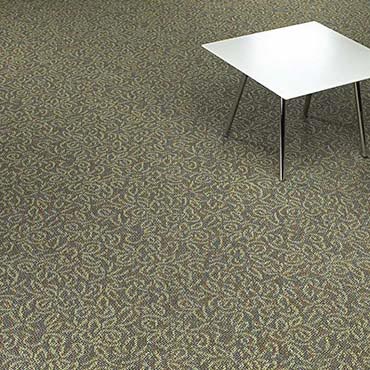Commercial Cut Pile (Pattern)

Navigating the World of Patterned Commercial Cut Pile Carpeting: Insights for Architects, Interior Designers, and Commercial Buyers
Introduction:
In the dynamic world of commercial interior design, patterned commercial cut pile
carpeting stands as a crucial element, balancing aesthetics, functionality, and durability. This article aims to provide architects, interior designers, and commercial
floor covering buyers with comprehensive insights into the selection, application, and benefits of patterned commercial cut pile carpeting, ensuring informed decision-making for various commercial spaces.
Understanding Patterned Commercial Cut Pile Carpeting:
Commercial cut pile carpeting, known for its durability and luxurious feel, is crafted by cutting yarn loops to create an upright pile. This technique offers a softer surface underfoot compared to its loop pile counterparts. When enhanced with patterns, these
carpets transform into versatile
flooring solutions, offering an array of designs from subtle textures to bold geometric motifs.
Design Considerations:
- Aesthetic Appeal: Patterned cut pile carpets serve as a foundational element in interior design. They can either complement or become the focal point in a commercial space, depending on the chosen pattern and color scheme.
- Color Fastness: High-quality carpets are designed to retain color even in high-traffic areas, ensuring a lasting visual appeal.
- Pattern Scale and Repetition: The scale of the pattern should harmonize with the room's dimensions. Larger patterns can make a bold statement in spacious areas, while smaller, more intricate designs are suited for compact spaces.
Material Selection:
- Nylon and Polypropylene: These synthetic fibers are popular for their resilience, stain resistance, and affordability.
- Wool: A premium option known for its natural beauty, durability, and ease of maintenance.
Performance and Durability:
- Traffic Considerations: High-traffic areas require carpets with denser construction and higher twist levels to withstand wear.
- Stain Resistance: Essential in commercial settings, carpets with inherent or treated stain resistance prolong their lifespan and maintain their appearance.
- Ease of Maintenance: Carpets that are easier to clean and maintain are preferable in commercial environments to minimize disruption.
Sustainability and Environmental Impact:
- Eco-friendly Materials: The growing trend towards sustainability has led to carpets made from recycled materials or sustainable sources.
- Indoor Air Quality: Low VOC (Volatile Organic Compound) emitting carpets contribute to healthier indoor environments.
Installation and Maintenance:
Proper installation is critical for the longevity of cut pile carpeting. Additionally, a well-planned maintenance program is essential to preserve the carpet's appearance and prolong its life.
Cost Considerations:
While patterned commercial cut pile carpeting can be an investment, its cost must be evaluated against its longevity, ease of maintenance, and the value it adds to the space in terms of design and comfort.
Conclusion:
Patterned commercial cut pile carpeting is more than just a floor covering; it's a crucial design element that can significantly impact the aesthetics and functionality of a commercial space. Architects, interior designers, and commercial buyers should consider the pattern, material, durability, environmental impact, and cost when selecting this type of carpeting to ensure a choice that is not only visually appealing but also practical and sustainable for their specific projects.
By understanding these aspects, professionals in the commercial floor covering industry can better navigate the vast options available, ultimately creating spaces that are both beautiful and functional.
Disclaimer: The information provided in this article is for general informational purposes only. While we strive to ensure the accuracy and reliability of the information presented, we make no warranties, express or implied, about the completeness, accuracy, reliability, suitability, or availability with respect to the content. Any reliance you place on such information is strictly at your own risk. We recommend consulting with professionals for specific advice tailored to your project’s needs, particularly regarding building codes, regulations, and product specifications.
Under no circumstances shall we be liable for any loss or damage, including without limitation, indirect or consequential loss or damage, arising from the use of, or reliance on, the information provided in this article.



